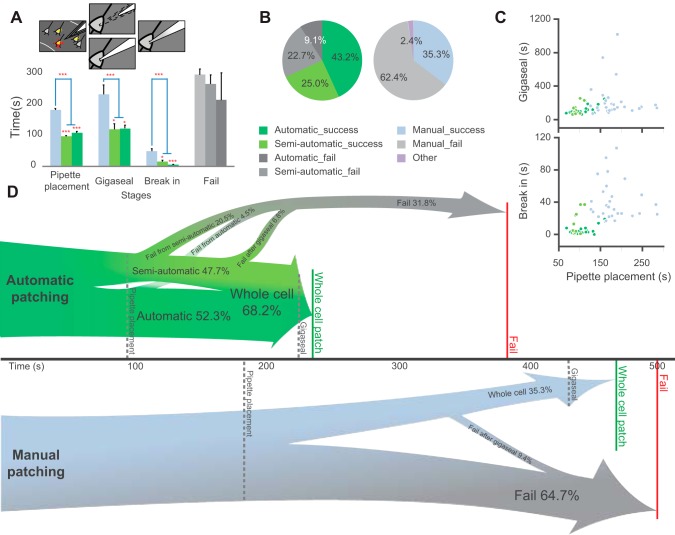Fig. 8.
Automatic patching algorithm significantly improves patch clamp efficiency. A: average time spent during pipette placement, gigaseal formation, and establishment of whole cell configuration (break in) in both automatic patching (dark green) and semiautomatic patching (light green) is significantly shorter than in manual patching (light blue) in successful trials. The time from the end of pipette placement to termination of a failed trial (gray) is not significantly different between the 2 methods (*P < 0.05; ***P < 0.001; 2-tailed Student's t-test). Error bars represent SE. B: success rate for automatic (n = 44 from 3 animals) and manual patching (n = 85 from 6 animals). C: distribution of times spent during the 3 patching steps. The automatic patching steps are faster and more reproducible compared with the manual patching steps. Data points are the times for pipette placement in all successful trials vs. gigaseal time (top) and break-in time (bottom). D: schematic illustration showing the average time and success/failure rates of automatic and manual patching.

